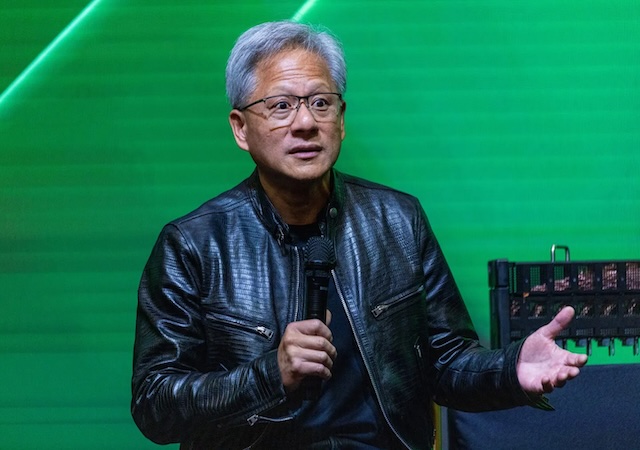November 3rd, 2024
AI Chips GPU
In the rapidly evolving landscape of artificial intelligence (AI), Nvidia stands at the forefront, pushing the boundaries of what is possible in computing and AI technology. Known for its pioneering GPUs, the company has been instrumental in transforming AI from a niche research field into a mainstream technology impacting numerous industries. As we look to 2025, Nvidia’s vision for the future of AI offers a glimpse into groundbreaking advancements that will shape the way we interact with technology, tackle global challenges, and redefine the limits of human innovation.
Key Developments in AI and Computing
1. Next-Generation GPUs: Faster and More Efficient
Nvidia’s flagship GPUs, including the RTX and A100 series, have powered much of the recent AI boom. By 2025, Nvidia plans to launch its next-generation GPUs, which promise substantial improvements in speed, energy efficiency, and processing power. These GPUs are expected to leverage new architectures optimized for AI workloads, making them even more efficient for deep learning tasks, which require intensive computational resources.
These GPUs will facilitate real-time processing of complex models, allowing industries to use AI for more accurate predictions, simulations, and real-time analytics. Nvidia’s advancements will also likely reduce the energy footprint of AI computations, aligning with global sustainability goals.
2. The Rise of Edge AI and Embedded AI Solutions
Edge AI — the deployment of AI at the “edge” or closer to where data is generated, rather than in centralized data centers — is set to gain momentum. By 2025, Nvidia envisions AI models running on compact, powerful devices that can operate independently, with minimal reliance on cloud infrastructure. This is particularly relevant in sectors like healthcare, where privacy is critical, and manufacturing, where real-time responses are necessary for automation.
Embedded AI will extend into areas like robotics, automotive, and augmented reality (AR), opening up new possibilities. Nvidia’s work with autonomous vehicles through its Drive platform, for instance, highlights how powerful GPUs and optimized models can enable self-driving cars to make split-second decisions without relying on external data centers.
3. Democratization of AI with Easy-to-Use Development Tools
Nvidia is also focusing on making AI accessible to a broader audience, especially non-experts. By 2025, Nvidia aims to offer enhanced software development kits (SDKs), pre-trained models, and platforms like CUDA and TensorRT to simplify AI development. Their Omniverse platform, a real-time collaboration and simulation tool, is set to evolve, supporting collaborative projects across industries and making AI model training and deployment more intuitive.
This democratization of AI tools will empower smaller businesses, educators, and individual developers to create and deploy sophisticated AI solutions without extensive technical expertise. The shift will accelerate AI adoption across sectors, from small startups to large enterprises.
4. AI in Climate Research and Sustainable Solutions
As global attention shifts toward tackling climate change, Nvidia is positioned to contribute through advanced AI-driven climate research. The company’s Earth-2 project, an ambitious effort to build a digital twin of the planet, aims to simulate the Earth’s climate, providing insights that could guide global environmental policies and practices.
By 2025, Nvidia anticipates that AI will play a pivotal role in climate modeling, allowing scientists to make more precise predictions about the impact of climate change and the effectiveness of mitigation strategies. Leveraging AI for climate simulations could be instrumental in understanding phenomena such as sea-level rise, extreme weather patterns, and biodiversity loss, helping policymakers and researchers to act with unprecedented foresight.
5. Advances in Language Models and Natural Language Processing (NLP)
Nvidia has been integral to the rapid advancement of large language models (LLMs) like ChatGPT and GPT-4. By 2025, Nvidia anticipates breakthroughs that will make NLP models more efficient, contextually aware, and capable of complex reasoning. With optimized hardware and software stacks, Nvidia is working to reduce the computational costs of training massive language models, enabling more sophisticated NLP systems that can support human-like conversation and assist in a wide range of applications, from customer service to education.
6. Quantum Computing Research and Its Potential Impact on AI
While quantum computing is still in its early stages, Nvidia has committed to exploring its potential for AI. By 2025, the company expects to make headway in integrating quantum computing principles into its product pipeline. If successful, quantum computing could revolutionize AI by accelerating tasks like optimization, pattern recognition, and drug discovery, which are challenging for classical computers.
Although the timeline for quantum supremacy remains uncertain, Nvidia’s investment in quantum AI research signals its commitment to exploring next-generation computational approaches that may one day transform the AI field.
Implications Across Industries
By 2025, Nvidia’s advancements will ripple across various sectors:
• Healthcare: From diagnostic tools powered by real-time imaging to predictive analytics for disease outbreaks, Nvidia’s AI solutions could revolutionize patient care.
• Automotive: With enhanced autonomy in self-driving cars, Nvidia aims to contribute to safer, more efficient transportation systems.
• Retail: AI-enabled inventory management, predictive sales analytics, and personalized shopping experiences could redefine retail business models.
• Finance: AI in risk management, fraud detection, and algorithmic trading could reshape financial services, enhancing security and efficiency.
• Education: AI-driven tutoring and personalized learning systems may bridge educational gaps, providing students worldwide with accessible, high-quality resources.
Challenges and Ethical Considerations
As Nvidia shapes the future of AI, ethical considerations will play a vital role. Concerns around data privacy, algorithmic bias, and AI-driven job displacement remain prominent. Nvidia has committed to responsible AI practices, working on transparency in model decision-making, developing fairness metrics, and collaborating with global regulators to ensure safe deployment.
Conclusion
By 2025, Nvidia’s vision for the future of AI promises revolutionary advancements that extend far beyond enhanced processing speeds. The company’s work on edge AI, climate research, democratizing AI tools, and quantum computing positions Nvidia as a driving force in AI’s future. As the technology continues to evolve, Nvidia’s roadmap outlines an exciting, transformative period for AI that will reshape industries and redefine humanity’s interaction with technology.